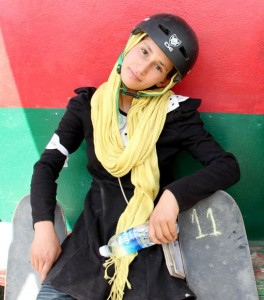Malala Moved to UK for Treatment as Anger Aimed at Taliban Builds
Yesterday, Pakistan’s MQM political party held a huge rally in Karachi in support of fourteen year old Malala Yousafzai, who was shot by the Taliban on Tuesday because of her outspoken views on the education of girls in Pakistan’s Swat Valley. The rally was one of many in the past few days in which Pakistanis have spoken out against the violence of the Taliban.
In addition to the rallies, though, we also have word that a jirga in the tribal areas also has for the first time spoken out against the Taliban and its attack on Malala:
In a first for the Federally Administered Tribal Areas (Fata) since the attack on Malala Yousafzai, a grand tribal jirga condemned the murder attempt, offered prayers for the child activist, and announced support for the government in this regard on Sunday.
The Haleemzai tribe’s grand tribal jirga held at Sangar Ghallanai was attended by thousands. The Taliban attack had not been condemned publicly by any prominent individual or group in Fata until now.
Addressing the jirga, peace committee leader Muhammad Ali Haleemzai said that terrorists had destroyed schools and hospitals in the region and were working against their tribal customs, saying they wanted to push the people ‘back to the stone age’.
Haleemzai announced an alliance under the name ‘Qaumi Aman Tarron’ (‘National Peace Alliance’) to safeguard the region against terrorists and terrorism. He said the alliance would be extended to other tribes of the Mohmand Agency and invited all peace committees to participate. Haleemzai said all those involved in anti-state activity and terrorism would be punishable by a hefty fine and expulsion from the area.
The rallies and the pronouncement from the Haleemzai tribal jirga suggest that the shooting of Malala may well serve as an issue around which Pakistanis finally unite to resist the influence of the Taliban, as some have suggested.
We also learn today that Malala is being moved to the UK where she will undergo further medical treatment. From Reuters:
The Pakistani schoolgirl shot by Taliban gunmen for pushing for girls to be educated has been sent to the United Kingdom for medical treatment, a military spokesman said on Monday.
The spokesman said in a statement that 14-year-old Malala Yousufzai, whose shooting has drawn widespread condemnation, will require prolonged care to fully recover physically and psychologically.
An air ambulance transporting Yousufzai, provided by the United Arab Emirates, had departed from Islamabad and was heading for the United Kingdom, said the spokesman.
“The panel of doctors recommended that Malala be shifted abroad to a UK center which has the capability to provide integrated care to children who have sustained severe injury,” said the spokesman in a statement.
There has been some improvement in Malala’s condition, which may well have contributed to the decision that she could now be transported:
Malik said Malala’s condition had improved and swelling on her brain’s membrane had decreased.
Pakistani doctors were also accompanying Malala, the minister said, adding that, she could also breathe without a ventilator.
The young girl will require continuing medical care:
She is being taken to the Queen Elizabeth Hospital in Birmingham – an NHS (National Health Service) hospital which has a specialist major trauma centre.
/snip/
Once she has recovered sufficiently, she is expected to need treatment to repair or replace damaged bones in her skull and to undergo neurological treatment.
It should also not be overlooked that it appeared that the majority of clerics in Pakistan spoke out against Malala’s shooting during Friday prayers.
We can only hope that Malala can one day join Gabrielle Giffords in overcoming such a horrific attack.


